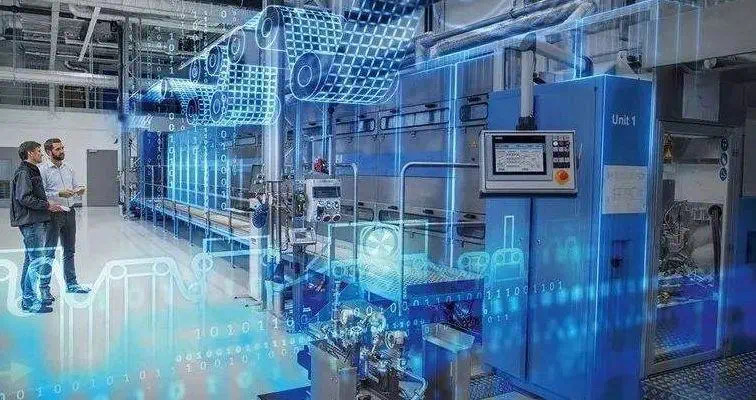5G is the fifth generation of mobile networks, following on from previous generations 2G, 3G, and 4G. 5G network offers low latency, high-speed transmission rate, massive connection features, using the 5G technology can greatly improve industrial production efficiency and human life. Currently, 5G technology is using in many industries such as smart home, smart city, autonomous driving, ultra HD video transmission, and so on. In the smart manufactory industry, most people are focusing on robotics technology. When the 5G meets with robotics, how 5G technology can improve the robotics technology, through this article, we will know more details.
1. The basic characteristics of 5G
Compared with the currently used 4G communication technology, in terms of Internet speed, 5G can provide a user experience rate of 1Gb/sec and a peak rate of 10Gb/sec, an increase of hundreds of times; in terms of network latency, 5G network can provide users with milliseconds In terms of the number of connected terminals, 5G supports millions of terminal connections per square kilometer, and the capacity is 1000 times larger.
There are three main application scenarios for 5G:
First, large bandwidth, which can provide faster transmission speeds for more users in densely populated areas, and supports high-definition video and virtual reality technology for virtual and augmented reality and games in the fields of video media, audio and video entertainment Scenario application drives consumption upgrades.
The second is low-latency, high-reliability communications, mainly for the industrial Internet, smart manufacturing, autonomous driving, smart energy and other fields, supporting the transformation and upgrading of the manufacturing industry, and high-quality development;
The third is the massive Internet of Things communication, which is mainly oriented to the Internet of Things fields such as smart cities, environmental monitoring, smart agriculture, forest fire prevention, etc., with the goal of sensing, data collection, and real-time analysis, to improve social management benefits and enhance security protection capabilities.
With a new network architecture, 5G technology will open a new era of extensive interconnection of everything and deep human-machine interaction, becoming a key infrastructure for comprehensively building the digital transformation of the economy and society, and driving transformation and upgrading in various fields. According to the International Telecommunications Union, from 2020-2035, the GDP contribution of the 5G industry value chain will reach 3.5 trillion U.S. dollars, and 22 million jobs will be created.
2. the important application of 5G in the field of robotics
5G technology meets the application requirements of traditional manufacturing companies for wireless networks based on robot transformation and upgrading, and can meet the needs of robot interconnection and remote interactive applications in the production environment. The 5G network is used to seamlessly connect robots and further integrate design, procurement, warehousing, and logistics To make production more flat, customized, and intelligent, realize data sharing, agile interconnection, application cloudification, and smart decision-making, and play an important supporting role in industrial control, logistics tracking, industrial AR, flexible manufacturing and other robot application scenarios .
Industrial control: It is the most basic application of robots in manufacturing plants, and the core is a closed-loop control system. 5G network can provide a network with extremely low time extension, high reliability, and massive connections, making it possible for closed-loop control applications to be connected via wireless networks. Millisecond-level low-latency technology will realize unprecedented interaction and coordination between robots and between robots and various production equipment, and provide precise and efficient industrial control.
Logistics tracking: Relying on robots to realize unmanned distribution from warehouse management to logistics requires wide coverage, deep coverage, low power consumption, large connections, and low-cost connection technologies. At the same time, the end-to-end integration of the robot factory spans the entire life cycle of the product In order to connect widely distributed products that have been sold, low-power, low-cost, and wide-coverage networks are also required. 5G technology can well meet this type of demand.
Industrial AR: Intelligent factories that use a large number of robots have a high degree of flexibility and versatility. In order to quickly meet the needs of new tasks and production activities, industrial AR can be used to monitor processes and production processes. Step-by-step guidance for production tasks, such as manual assembly process guidance, remote expert business support, such as remote maintenance. In these applications, auxiliary AR facilities need to have maximum flexibility and portability in order for maintenance work to be carried out efficiently. Through 5G mobile network remote control, monitoring and reconfiguration, robots and various equipment can be self-optimized to simplify the production line and overall planning, and achieve full-domain video monitoring of the production workshop and full-process product tracking.




















